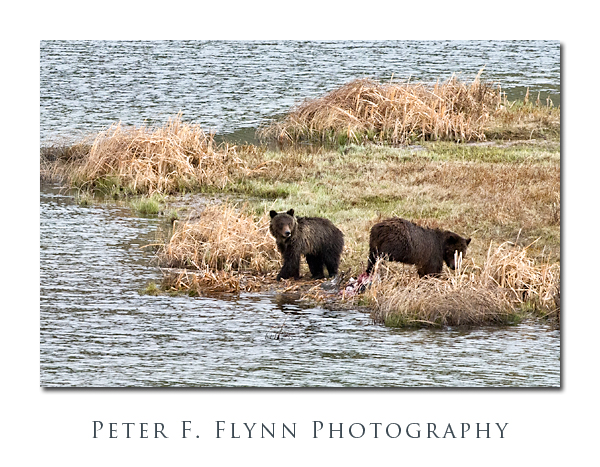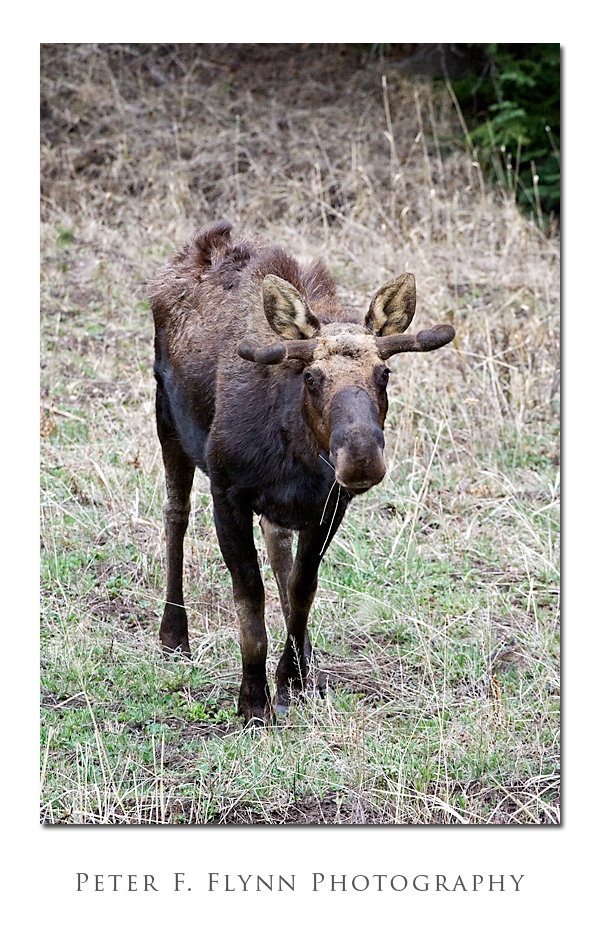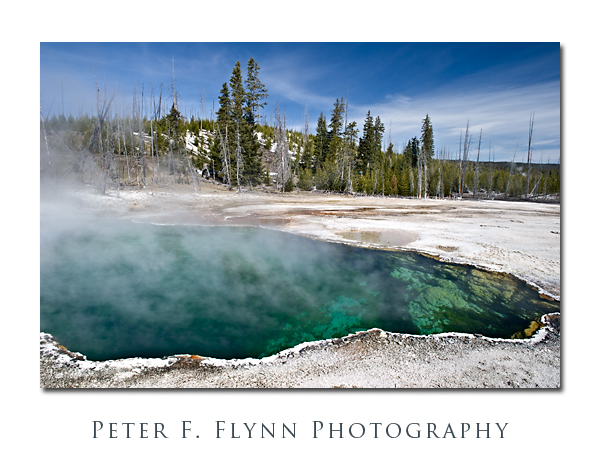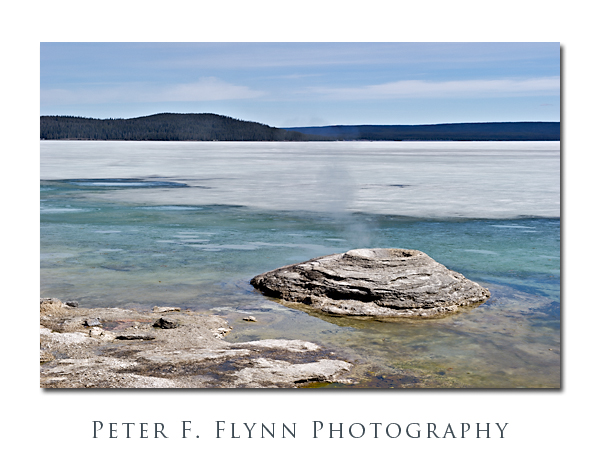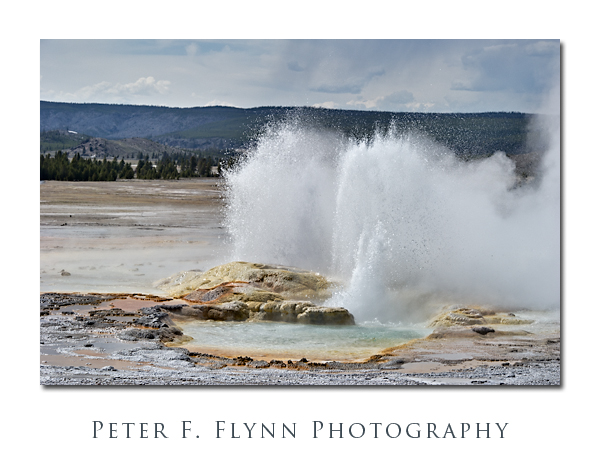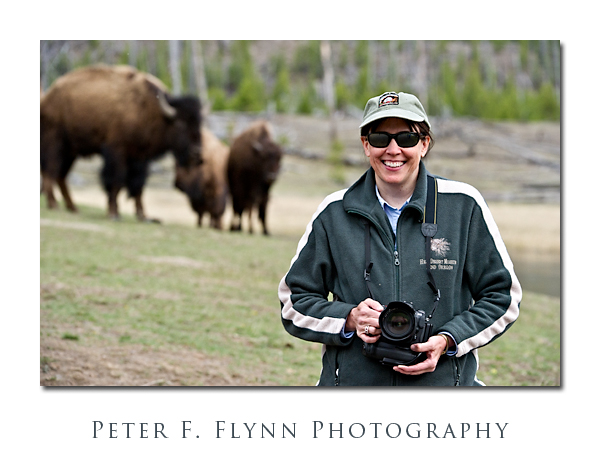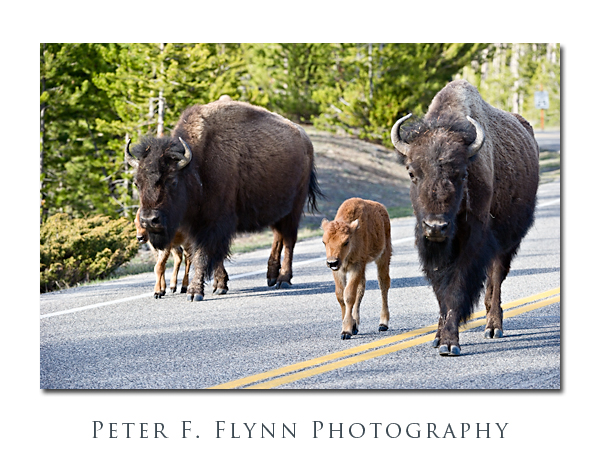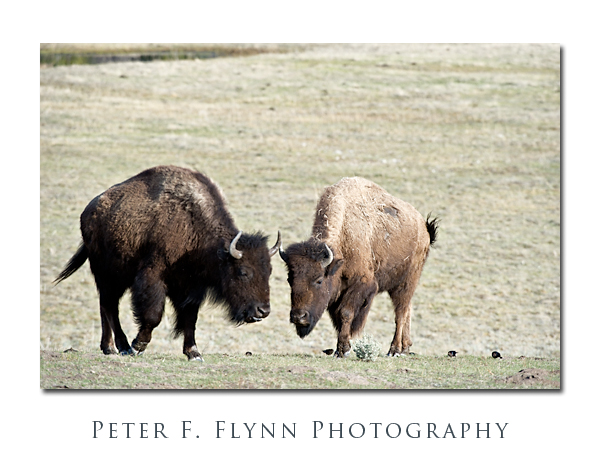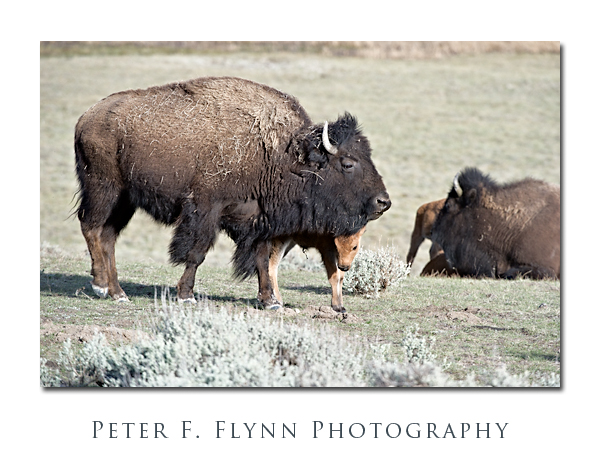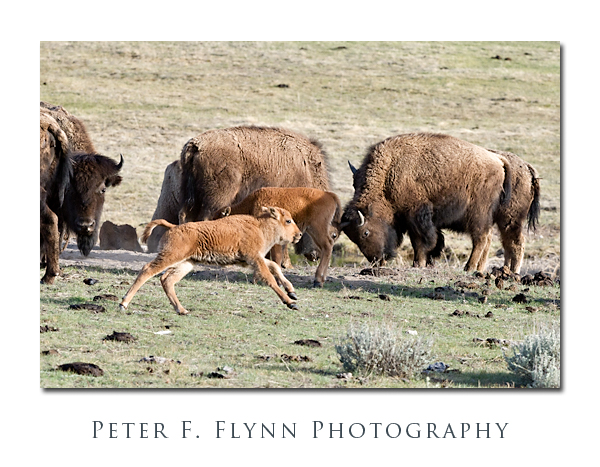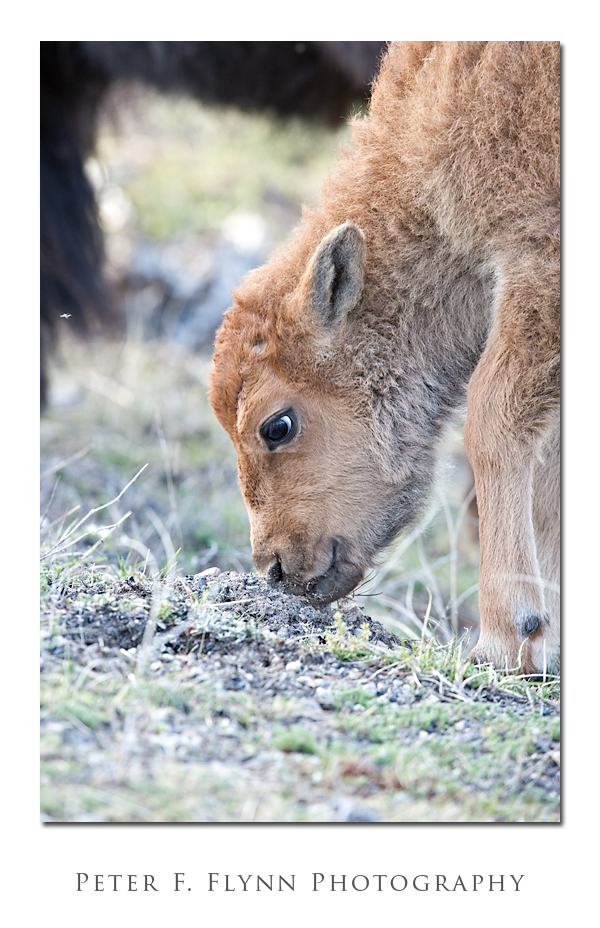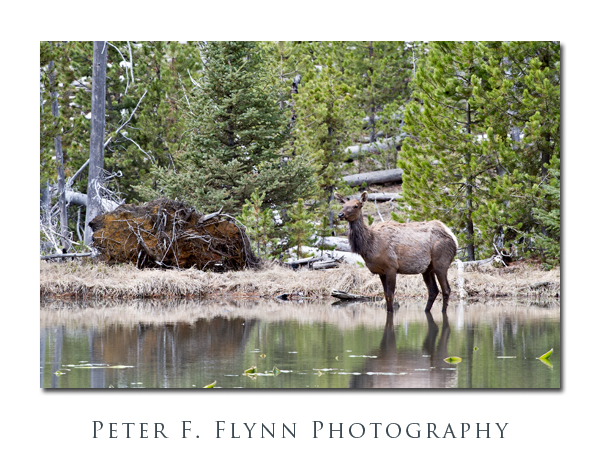 On May 18, 2010, we drove from Old Faithful Inn north to Mammoth Hot Springs in the northeastern sector of Yellowstone National Park. In the spring through summer of 2010 the road between Madison to Norris was closed from 10pm through 8am, with 30 minute delays at other times. We were only stopped once on the transit, for approximately 15 minutes.
On May 18, 2010, we drove from Old Faithful Inn north to Mammoth Hot Springs in the northeastern sector of Yellowstone National Park. In the spring through summer of 2010 the road between Madison to Norris was closed from 10pm through 8am, with 30 minute delays at other times. We were only stopped once on the transit, for approximately 15 minutes.
Near Twin Lakes we encountered a crowd of onlookers viewing a cow elk standing in south Twin Lake. This elk had been attacked earlier in the day or on the previous day by one or several wolves and had sought refuge in the lake. I never thought about it before, but although I’m quite certain that wolves can swim well, they would never be able to mount an effective amphibious assault on an elk. A simple but effective temporary defense on the part of the elk, however we later learned that the it had been taken by the wolves a day later. The image was recorded at 11:23 MDT using the Nikon D3s and the AF-S VR Zoom-Nikkor 200-400mm f/4G IF-ED lens at 400mm. Exposure was f/8 and 1/1250s, ISO 1600. Cropped.
After a brief stop in Mammoth, we drove to Gardiner (~5 miles north) to pick up supplies. As rain appeared quite likely, and we had forgotten to bring umbrellas (okay, get umbrellas on the master list!) we also picked up a couple of inexpensive specimens ($5!). Passing back through Mammoth, we ventured eastward into the heart of the northern section of the park. Literally within minutes after leaving Mammoth we were rewarded with the most excellent opportunity to view a pair of Grizzlies (sow and a 2nd-year bear) devouring a bison carcass at Blacktail Ponds. Much of the roadway between Mammoth and Tower-Roosevelt is elevated, and in the area near Blacktail Ponds it is approximately 50ft or so above the pond level, providing a favorable perspective on anything that might occur there.
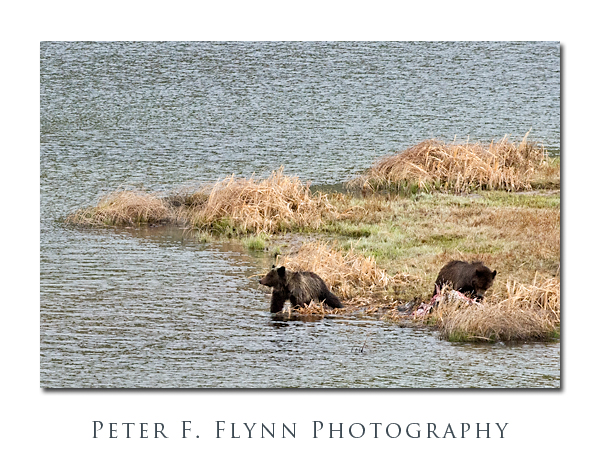 The images above and below were recorded at ~16:00 MDT on May 18, 2010, using the D3s and the 200-400mm lens at 400mm. Cropped. Exposure was f/8.0 and 1/800s, ISO 12800. Yeah, that was 12800. No noise remediation in these images. I’ve found that all of the known noise reduction packages produce a weird and unrealistic softening of the image, whereas, at least with images out of the D3s, just working up the image in the normal way leaves a sense of graininess that is reminiscent of high ISO film. For my $, I prefer the latter. Of course it rained during entire session with bears – thankful we got the umbrellas.
The images above and below were recorded at ~16:00 MDT on May 18, 2010, using the D3s and the 200-400mm lens at 400mm. Cropped. Exposure was f/8.0 and 1/800s, ISO 12800. Yeah, that was 12800. No noise remediation in these images. I’ve found that all of the known noise reduction packages produce a weird and unrealistic softening of the image, whereas, at least with images out of the D3s, just working up the image in the normal way leaves a sense of graininess that is reminiscent of high ISO film. For my $, I prefer the latter. Of course it rained during entire session with bears – thankful we got the umbrellas.
Later in the day and further east near Tower-Roosevelt we encountered a young moose in a ravine along the side road to the Petrified Tree. As above with Griz, the road elevation helped make the relatively short direct distance between wildlife and photog safe for both. The image below was recorded at 19:20 MDT on May 19, 2010, using the D3s and the 200-400mm lens at 380mm. Exposure was f/8 and 1/500s, ISO 12800. No noise reduction.
Copyright 2010 Peter F. Flynn. No usage permitted without prior written consent. All rights reserved.
